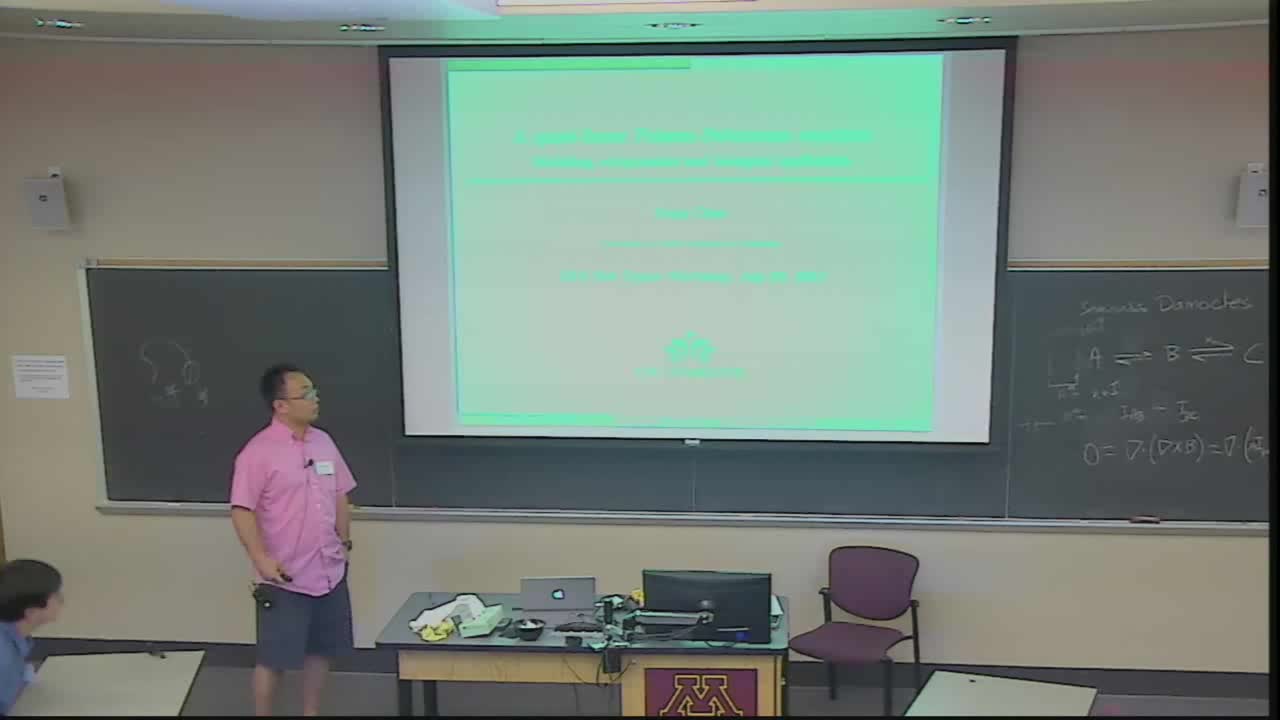Modeling and Computation of Heterogeneous Implicit Solvent and its Applications for Biomolecules
Presenter
July 23, 2015
Keywords:
- Implicit computation
MSC:
- 03D15
Abstract
Description of inhomogeneous dielectric properties of a solvent in the vicinity of ions has been attracting research interests in mathematical modeling for many years. From many experimental results, it has been concluded that the dielectric response of a solvent linearly depends on the ionic strength within a certain range. Based on this assumption, a new implicit solvent model is proposed in the form of total free en- ergy functional and a quasi-linear Poisson-Boltzmann equation (QPBE) is derived. Classical Newton’s iteration can be used to solve the QPBE numerically but the corresponding Jacobian matrix is complicated due to the quasi-linear term. In the current work, a systematic formulation of the Jacobian matrix is derived. As an alternative option, an algorithm mixing the Newton’s iteration and the fixed point method is proposed to avoid the complicated Jacobian matrix, and it is a more general algorithm for equation with discontinuous coefficients. Computational efficiency and accuracy for these two methods are investigated based on a set of equation parameters. At last, the QPBE with singular charge source and piece-wisely defined dielectric functions has been applied to analyze electrostatics of macro biomolecules in a complicated solvent. A set of computational algorithms such as interface method, singular charge removal technique and the Newton- fixed-point iteration are employed to solve the QPBE. Biological applications of the proposed model and algorithms are provided, including calculation of electrostatic solvation free energy of proteins, investigation of physical properties of channel pore of an ion channel, and electrostatics analysis for the segment of a DNA strand.
